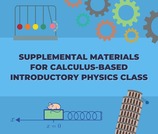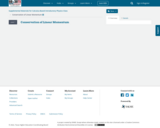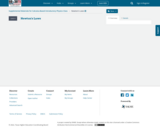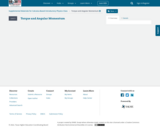
The modules posted below aim to provide digital resources for students and instructors. Providing students on-demand digital, multimedia, open-access resources which can be watched repeatedly at convenient times can serve as one path to improving student success in introductory physics courses The modules have been created for each topic covered in calculus-based introductory physics courses. Each module includes:Videos reviewing the laws and concepts, and videos with step-by-step problem solving providing students with additional aid in learning the material. (i) Review Videos summarize major topics after students had encountered them in class and highlight their application to common and significant problems. This resource incorporates explanations, derivations, and demonstrations to illustrate a concept; (ii) Problem-Solving Videos present detailed solutions to multi-step questions which students might encounter when working through textbook problems or on major summative assessments. This in-depth approach was structured to guide students in improving their problem-solving skills and techniques, as well as address common mistakes. More than one hundred videos have been created for different types of learners. This is a resource for both students and instructors.Textbook-independent homework problem sets that could be implemented via LMS. The homework has a mix of multiple-choice and free-response problems aiming to develop student critical thinking. Detailed solutions to all problems are provided so that the students can compare their results with the solution, or an instructor can understand what was intended for the solution if modification of the problem is desired. This is a resource for both instructors and students. Video demonstration experiments for each topic that will allow the instructors around the State of Texas to bring physics experiments to their classrooms (instructor resource). The videos merely show the experiment taking place without any explanation of the underlying physics. This gives the instructor complete freedom to tailor the explanation to their class. A text with a brief description of the experiments is provided.
- Subject:
- Physical Science
- Physics
- Material Type:
- Assessment
- Full Course
- Homework/Assignment
- Lecture
- Lesson
- Provider:
- Texas A&M University
- Date Added:
- 09/09/2022





